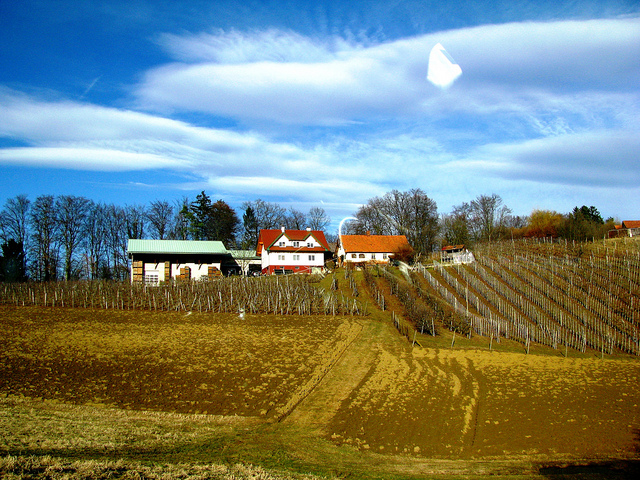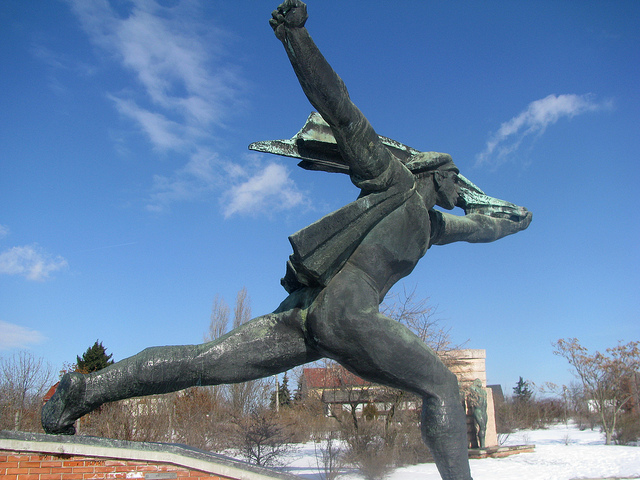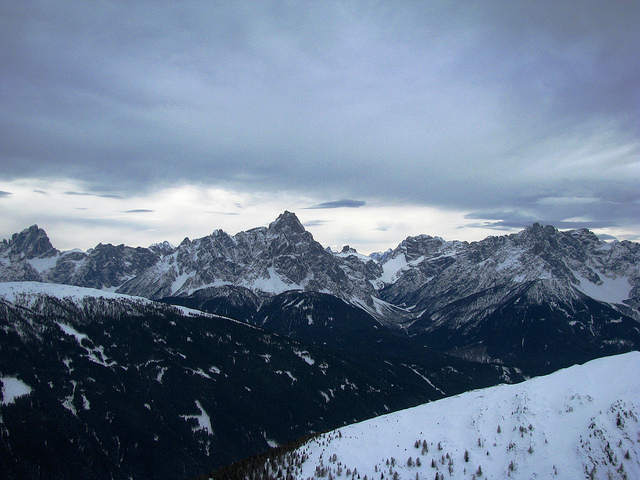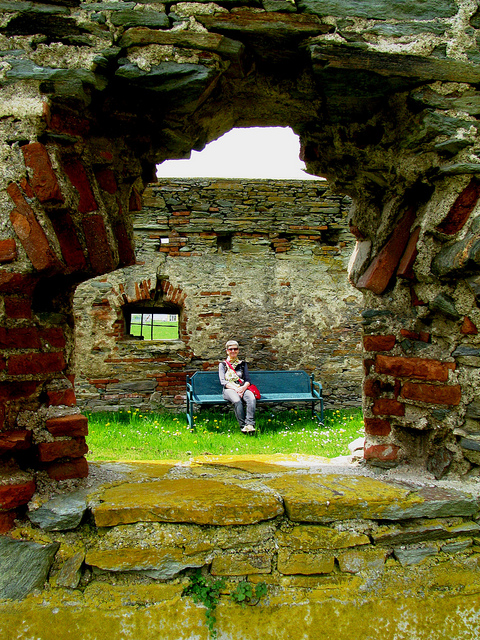My last two days in Austria, February 25 and 26, 2012, had started. After four days in Budapest and five great days of skiing in the Austrian and Italian Dolomites I was looking forward to spending a couple of days with my family in my home town. Weiz is a small town of about 9,000 people in Eastern Styria, about 30 minutes from Austria’s second largest city, Graz. It is a very historic town as several Roman tombstones attest to settlement over 2000 years ago. The church on the city’s main square, Taborkirche, was first mentioned in official records in 1188 and overlooks the square from its stout Romanesque foundation.
During this bright and sunny morning, my brother and sister-in-law headed into town to take the dog for a walk and to visit the Saturday morning farmers’ market. Culinary traditions in this region are deeply rooted: from smoked pork meat to freshly baked rye bread to schnapps made from different types of food, products made by local farmers are highly sought after. One of the region’s most famous culinary delicacies is the Styrian pumpkin seed oil, a dark green, highly nutritious oil with a distinct nutty taste that is used for salads and many other dishes. It is this pumpkin seed oil that I miss the most about Austrian cuisine and I always have to buy a bottle and bring it home with me to Canada.

After a delicious lunch featuring typical Austrian cold cuts and cheese, we embarked on a country excursion: we drove less than an hour south into the region of South Eastern Austria and went for a hike on the Stradner Kogel, a hill of volcanic origin close to the spa town of Bad Gleichenberg. We climbed up the hill past the Waltra Rock, a steep precipice in the basaltic rock and made our way to the top of the hill to get a great view towards the far-away mountains of northeastern Styria.
Then we continued our drive past the Riegersburg, a monumental medieval castle that also sits on basaltic rock, part of the Transdanubian Volcanic Region. This powerful fortress was first originally documented in 1138 and occupies a strategic position overlooking the surrounding countryside. It was an important part of the Austrian border defense system against the Turkish invasions of the 15th century.
Minutes away we stopped at the Zotter Chocolate Factory, a very popular local tourist attraction where visitors can enjoy guided tours, chocolate tastings and a special chocolate retail experience. The chocolate here is made only of organic chocolate that has been sourced according to Fair Trade principles. The company also operates an “Edible Zoo” which features old breeds of livestock such as chicken, goats and cattle that are on display for visitors and can roam comfortably on 27 hectares. After an enjoyable life, these animals actually become part of the food chain. Impressed by the innovative offerings in this factory’s store, we tasted several varieties of hot chocolate and purchased various sweet souvenirs from the store.

My last day in Austria was spent with a nice morning walk on the hill overlooking my hometown which is a popular place for joggers. For lunch, my brother, an expert chef, had whipped up some mouth-watering Wiener schnitzel accompanied by some potato and bean salad, definitely some of my favourites.
In the afternoon we visited my sister-in-law’s family and headed for another country walk. The evening program had a distinctly more international flavor: a concert by Cuban pianist Omar Sosa who was accompanied by creative vocalist Mola Sylla hailing from Senegal. Mola uses his voice and various traditional instruments to evoke the sounds of Africa. Omar Sosa is a tremendously gifted piano virtuouso who reveled in his African-inspired jazzy melodies. After this energizing concert we spent some time in the concert hall’s café to catch up with good friends and savour the rest of an enjoyable evening.
Two weeks in Europe had passed far too quickly. From the adventures around my native town in Eastern Styria to five days of adrenaline-infused skiing in the Austrian and Italian Dolomites to four days of urban explorations in Budapest, it had been a phenomenal mid-winter getaway. It was great to catch up with friends and family and to make new acquaintances and friendships. I am already looking forward to my next trip to Europe.





